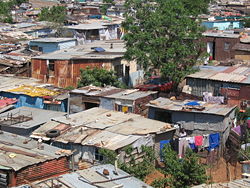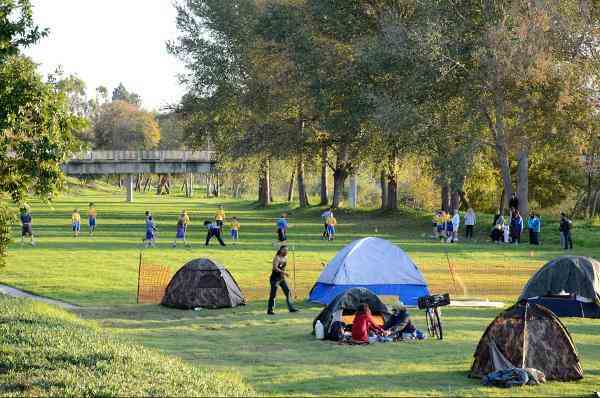Occupy Addis
 Yesterday my fiancée and I went to the county courthouse to pick up marriage license forms. Going out the backdoor, we stumbled onto the Occupy Santa Cruz encampment. There were probably 100 tents and a tepee right in front of us.
I had a flashback to when I was working for the United Nations Development Program in Addis Ababa, Ethiopia. Every morning I walked to work. Our offices were in the complex of buildings known as the Economic Commission for Africa (ECA), which housed UN-related agencies in one compound. On one side of the wall, people had built makeshift homes, what are often referred to as shantytowns or slums. Using corrugated metal, wood, stone, whatever they could find, they had constructed homes for themselves at the gate of the ECA and in other available pockets all around the city.
Yesterday my fiancée and I went to the county courthouse to pick up marriage license forms. Going out the backdoor, we stumbled onto the Occupy Santa Cruz encampment. There were probably 100 tents and a tepee right in front of us.
I had a flashback to when I was working for the United Nations Development Program in Addis Ababa, Ethiopia. Every morning I walked to work. Our offices were in the complex of buildings known as the Economic Commission for Africa (ECA), which housed UN-related agencies in one compound. On one side of the wall, people had built makeshift homes, what are often referred to as shantytowns or slums. Using corrugated metal, wood, stone, whatever they could find, they had constructed homes for themselves at the gate of the ECA and in other available pockets all around the city.
It strikes me that Ethiopia’s urban poor may have been ahead of the curve on the Occupy movements going on in the US right now. Their only option to survive in the city was to take the reality of poverty onto the front steps of those who have power. They weren’t protesting, they were living.
One of the things I’ve never gotten used to in this job is the juxtaposition of great poverty and great wealth. They are often next-door neighbors.
In Ethiopia, each morning I would flash my ID badge at the gate and be let into a clean, open, and expansive compound. I would walk past the flags of the world fluttering in the wind. It felt a world apart from the other side of the wall. Going back home at the end of the day, I’d have to disappoint one or two young boys who wanted to shine my shoes or sell me a packet of tissues. I’d pass the dirty river and a dumpster that I never saw emptied, just picked through every day. Each day, I existed in two realities: great wealth and great poverty.
Back in the US, I still do this everyday. My walk to work each morning in Santa Cruz takes me past many people who are homeless,
warming themselves up after a cold night on the streets. I work all day in a comfortable office, not too far away from where homeless youth find a camp for the night by the river.
When I travel for Firelight, the juxtaposition often becomes starker. For example, driving through a suburb of Harare in Zimbabwe, I pass mansion-like homes to visit their neighbors--a settlement of people who were displaced during Operation Murambatsvina when informal settlements were cleared by the government. Now, this group of people are in even less formal settlements, making their homes out of plastic sheeting and scavenged boards.
The “have-nots” occupying space is not new. It is often the only option available to people existing in poverty. In many countries, it is a very unsafe option. There is overcrowding, inadequate sanitation, and the threat of losing your home when the government decides to clear the area. In Santa Cruz, the Occupy movement is also fighting to stay on the land they have occupied. We are not so different.

